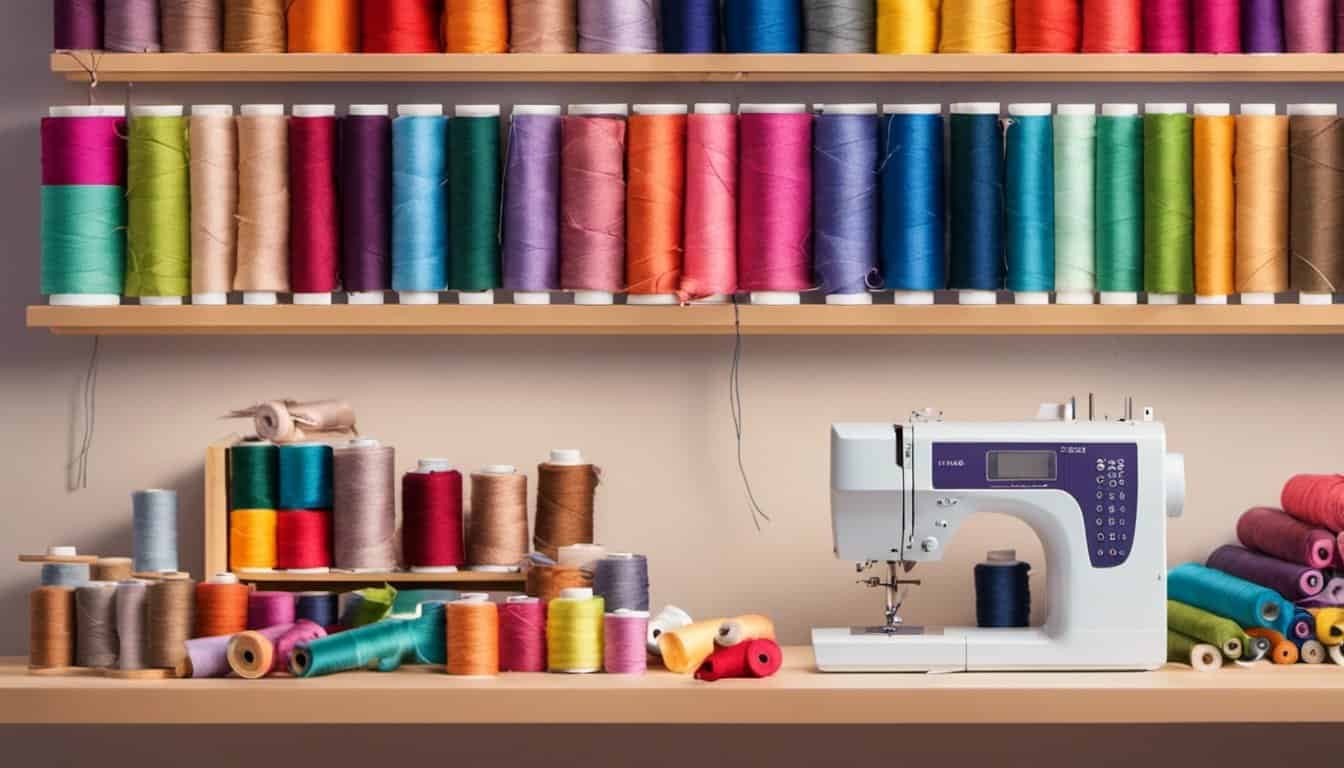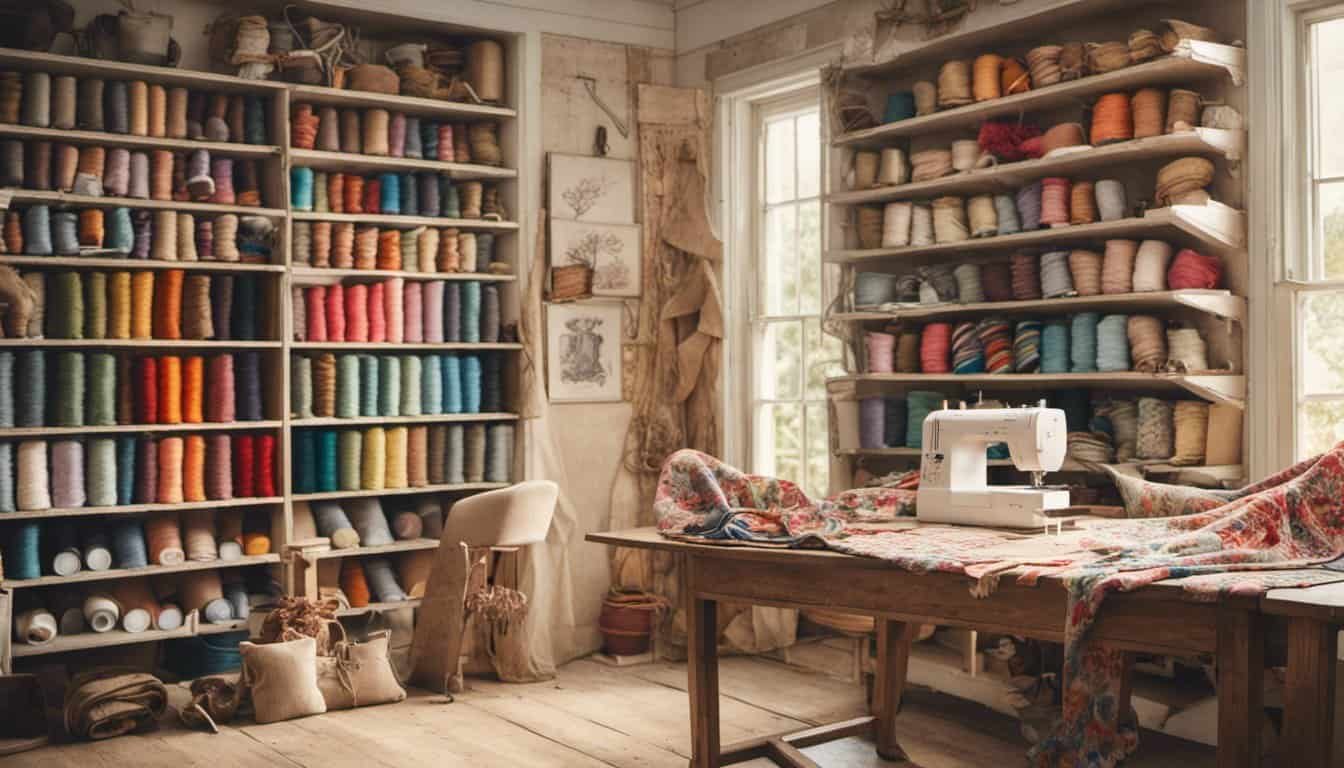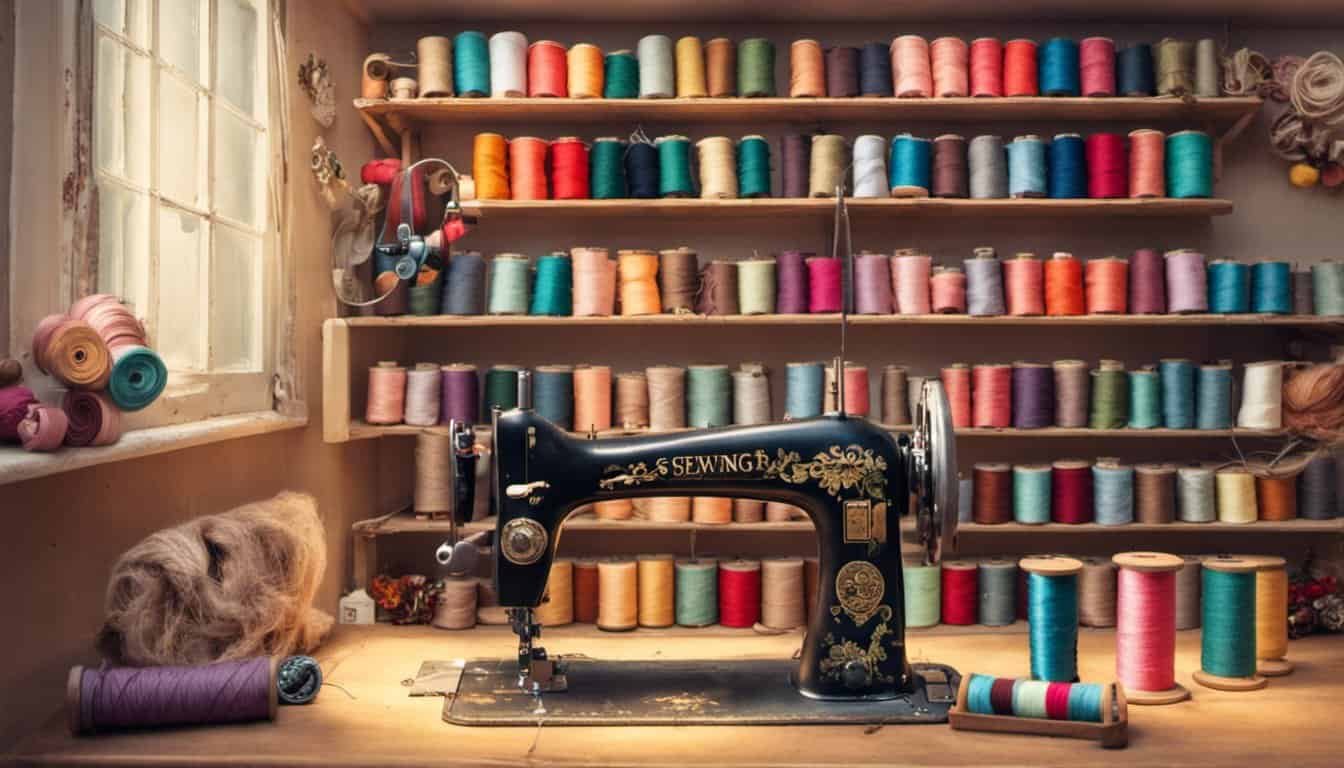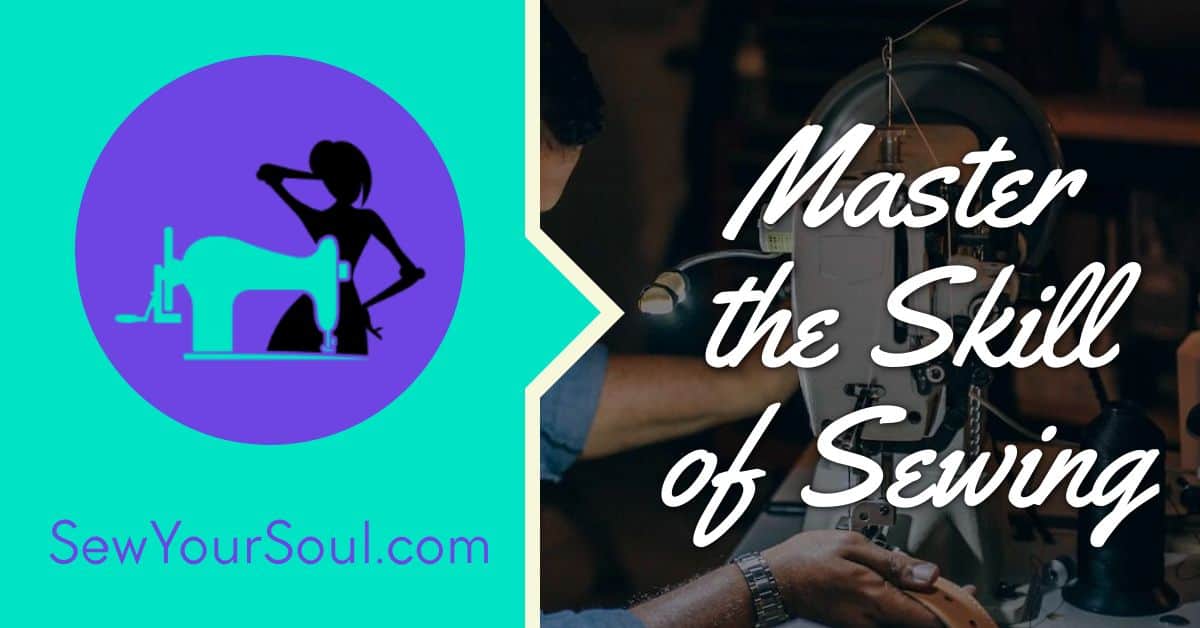Are you curious about how much sewing needles have evolved over the years? Well, you’re in luck! In this article, we’ll explore the fascinating world of sewing needles and discover just how much they have changed throughout history. From the humble beginnings of bone needles to the modern-day steel ones, you’ll be amazed at the advancements in design and functionality. So, grab your thread and let’s dive into the intriguing world of sewing needles!
Have you ever wondered how much sewing needles have impacted the art of sewing? Look no further! In this article, we’ll take a closer look at the significant role that sewing needles play in the world of stitching and crafting. From their importance in achieving precise stitches to their ability to handle different fabrics, sewing needles are an essential tool for any sewing enthusiast. So, whether you’re a seasoned seamstress or just starting out, get ready to appreciate the value of these tiny but mighty tools!
History of Sewing Needles
Sewing needles have been an essential tool in the world of sewing, embroidery, knitting, and crafts for centuries. They have a fascinating history, with designs and functionality evolving over time to meet the changing needs of artists and artisans like yourself.
Ancient Origins
The origins of sewing needles can be traced back thousands of years. Archaeologists have unearthed bone needles dating back to the Paleolithic era, showcasing our human ancestors’ ingenuity and resourcefulness. These early needles were simple and utilitarian, used for basic stitching and mending.
The Bronze Age
As civilizations advanced, so too did the technology and craftsmanship behind sewing needles. During the Bronze Age, needles made from copper and bronze became more common. These needles featured a more refined design, with a pointed tip and an eye for threading the thread or yarn.
The Industrial Revolution
The Industrial Revolution brought about a revolution in sewing needle production. The invention of the sewing machine in the 19th century led to a surge in the demand for needles. To meet this demand, needles began to be mass-produced using steel and other durable materials. Needle manufacturers adopted innovative techniques, such as tempering and grinding, to enhance the strength and sharpness of the needles.
Modern Innovations
In recent decades, sewing needle technology has continued to evolve. Needles with specialized features have been introduced to cater to specific sewing needs. For example, there are needles designed for different fabric types, such as leather, denim, and stretch knits. Needles with larger eyes are available for easier threading, while others have a ballpoint tip for sewing knit fabrics without damaging the fibers.
Appreciating the Value
As you delve into your sewing and crafting projects, take a moment to appreciate the value of sewing needles throughout history. These humble tools have come a long way, from the basic bone needles of the past to the high-quality, specialized needles available today.
Remember, choosing the right needle for your project is just as important as selecting the right fabric, thread, or yarn. So, the next time you thread your needle and start stitching, think about the long and storied history behind this essential tool.

-> The evolution of sewing needles is a testament to human ingenuity and the ongoing quest for precision and functionality. Embrace the history and advancements of sewing needles as you pursue your creative endeavors.
Types of Sewing Needles
When it comes to sewing, having the right needle for the job can make a world of difference. There are various types of sewing needles available, each designed to handle different fabrics and stitching techniques. Here are some common types of sewing needles you should know about:
1. Universal Needles: These needles are the jack-of-all-trades in the sewing world. They are suitable for a wide range of fabrics, including woven and knit fabrics. Universal needles have a slightly rounded point that helps prevent snags and damage to the fabric.
2. Ballpoint Needles: If you frequently work with stretchy or knit fabrics, ballpoint needles are your go-to. They have a rounded tip that slides between the threads of the fabric rather than piercing them, reducing the risk of snags or runs.
3. Sharp Needles: As the name suggests, sharp needles have a sharp point that easily penetrates tightly woven fabrics like silk or cotton. They are perfect for creating precise stitches and sewing delicate fabrics.
« Discover the Secret to Perfect Sewing: Unveiling the Foolproof Techniques for Determining the Right Tension on Your Sewing Machine
Discover the Ultimate Secrets to Perfectly Polished Sewing Creations with These Mind-Blowing Finishing Techniques »
4. Leather Needles: When it comes to sewing leather or faux leather, you need a specialized needle. Leather needles have a chisel point and are designed to cut through thick layers of leather without causing damage.
5. Embroidery Needles: If you enjoy adding decorative stitches or intricate designs to your projects, embroidery needles are a must-have. They have a larger eye that makes it easier to thread embroidery floss or other decorative threads.
6. Quilting Needles: Quilting needles are specifically designed to handle the multiple layers of fabric in quilting projects. They have a short, sharp point that makes it easier to pierce through the layers without causing puckering.
7. Twin Needles: Want to create professional-looking topstitching or hems? Twin needles are your secret weapon. These needles have two needles mounted on a single shaft, allowing you to create parallel rows of stitching.
Remember, using the right needle for your project is essential to ensure smooth and precise stitches. So, next time you embark on a sewing adventure, make sure to choose the right needle that suits your fabric and technique!

No conclusion paragraph.
Choosing the Right Sewing Needle
When it comes to sewing, choosing the right needle can make all the difference in the world. Whether you’re working on a delicate embroidery project or stitching heavy-duty fabrics, using the correct needle can ensure smooth, precise stitches and prevent any damage to your fabric.
So how do you choose the right sewing needle for your project? Here are a few factors to consider:
1. Needle Type: Needles come in various types, including universal, ballpoint, sharp, and embroidery needles. Each type is designed for specific purposes. Universal needles are the most commonly used and can handle a wide range of fabrics. Ballpoint needles are perfect for knit fabrics, as they slide between the fibers without snagging. Sharp needles are great for tightly woven fabrics, while embroidery needles have a large eye to accommodate thicker threads.
2. Fabric Type: Consider the type of fabric you’re working with. Different fabrics require different needle sizes and types. For lightweight fabrics like silk or chiffon, use a fine needle size, such as 70/10. Medium-weight fabrics like cotton or linen work well with a size 80/12 needle. For heavy-duty fabrics like denim or canvas, opt for a larger needle size, such as 100/16, to penetrate through the layers easily.

3. Technique: The needle you choose also depends on the sewing technique you’re using. If you’re doing appliqué or decorative stitching, an embroidery needle can provide the necessary precision. For quilting, a quilting needle with a tapered point can help pierce through multiple layers. If you’re working with stretchy fabrics, a ballpoint needle is essential to avoid skipped stitches.
4. Consider Specialized Needles: There are specialized needles available for specific fabrics or techniques. Metallic needles are designed to reduce thread breakage when working with metallic threads. Leather needles have a chisel point and are ideal for sewing leather or suede. Twin needles create parallel rows of stitches and are perfect for hemming or decorative sewing.
Different Sizes of Sewing Needles
When it comes to sewing, embroidery, knitting, and other craft projects, choosing the right needle size is crucial for achieving professional and precise results every time. Sewing needles come in a variety of sizes, each designed for specific purposes and fabric types. Here’s what you need to know about the different sizes of sewing needles:
Needle Size
Sewing needles are labeled with numbers that correspond to their size. The higher the number, the finer the needle. For example, a size 9 needle is much finer than a size 18 needle. The most commonly used sizes for general sewing purposes are 9, 11, and 14. However, it’s essential to remember that needle sizes can vary between different brands, so it’s always a good idea to check the packaging or the manufacturer’s recommendations.
Fabric Type and Needle Size
The choice of needle size depends on the fabric you are working with. Lighter-weight fabrics, such as silk or chiffon, require finer needles with smaller numbers, like sizes 9 or 11. On the other hand, heavier fabrics like denim or upholstery materials need larger, stronger needles such as sizes 14 or 16 to penetrate through the layers easily.

Thread Type and Needle Size
Another factor to consider when selecting the right needle size is the thread you’ll be using. Thin threads, such as silk or fine cotton, work best with smaller needles to avoid damaging the fabric. Thicker threads, like those used for embroidery or topstitching, require larger needles to accommodate their size.
Matching Needle Type with Technique
Apart from size, needle types also vary based on the specific sewing technique. For hand embroidery or hand sewing, you’ll want to use embroidery needles, which have a long, sharp point. For machine sewing, universal needles are usually suitable for most fabric types. However, specialty needles like ballpoint or stretch needles are designed for stretchy or knitted fabrics to prevent snags or skipped stitches.
Remember
How to Care for Sewing Needles
Taking proper care of your sewing needles is essential to ensure they stay sharp and in good condition for all your crafting needs. By following a few simple tips, you can extend the life of your needles and achieve the best results in your sewing, embroidery, knitting, and other crafts.
1. Keep them clean: After each use, make sure to remove any debris or thread remnants from your needles. You can use a small brush or a pincushion with a built-in brush. This will prevent build-up that can lead to poor stitching and dull needles.
2. Store them properly: When not in use, store your needles in a needle case or a pincushion. This will keep them organized and protected from damage. Avoid leaving your needles exposed or loose in your sewing box, as they can easily get lost or damaged.

3. Avoid rust: Moisture can cause needles to rust, which can damage your fabric and affect the quality of your stitching. To prevent rusting, make sure your needles are completely dry before storing them. You can also add a silica gel packet to your needle case to absorb any excess moisture.
4. Rotate your needles: Using the same needle for too long can cause it to become dull and less effective. Rotate your needles regularly to distribute the wear and tear evenly. This will help maintain their sharpness and prolong their lifespan.
5. Use needle threaders: If you have trouble threading your needles, using a needle threader can help. It reduces the risk of bending or damaging the eye of the needle while also saving you time and frustration.
Conclusion
Throughout this article, you’ve explored the fascinating evolution of sewing needles. From their ancient origins to the modern innovations of today, sewing needles have come a long way in terms of design and functionality.
You’ve learned about how the Industrial Revolution revolutionized needle production, making them more accessible to the masses. You’ve also discovered the importance of using the right needle for different fabrics and techniques, ensuring that your stitches are precise and your sewing projects are a success.

By following the tips provided, such as choosing the right needle based on factors like needle size, fabric type, and thread type, you can enhance your sewing experience. Additionally, you’ve gained valuable insights on how to care for your sewing needles, keeping them clean, rust-free, and ready for use at all times.
Sewing needles are not just tools, but essential companions in the art of sewing. With their help, you can transform fabrics into beautiful creations. So, whether you’re a seasoned seamstress or just starting out, remember the significance of sewing needles and how they contribute to the artistry and precision of your sewing projects. Happy sewing!













